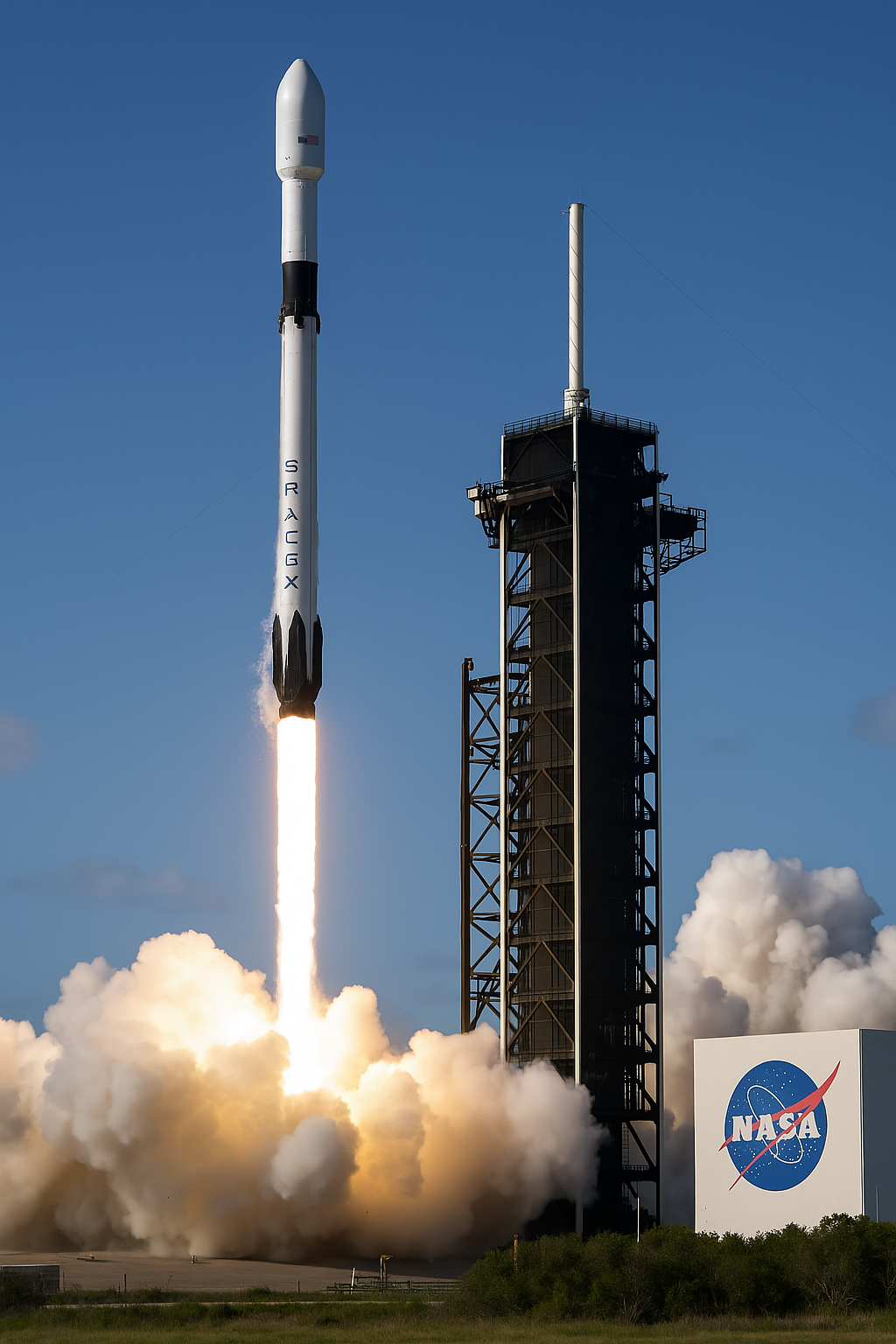SpaceX, the private space company founded by billionaire entrepreneur Elon Musk, successfully launched 21 more Starlink satellites into space on Saturday. The launch took place at NASA’s Kennedy Space Center in Florida. This center, located on the state’s Atlantic coast, is often used for important space missions.
New Launch from Florida’s Space Coast
The satellites were carried into orbit by a Falcon 9 rocket. Falcon 9 is a reusable rocket designed by SpaceX. It has been used in many previous missions. This launch marked yet another step in the company’s efforts to build a massive network of satellites around the Earth.
The goal of Starlink is to provide fast internet service to people all over the world. Many remote areas on Earth do not have good internet connections. Starlink aims to fix this by using satellites to deliver signals instead of wires or cables. This can help people living in villages, on islands, in forests, or even on mountains to get access to the internet.
The launch happened smoothly. After blasting off into the sky, the rocket released the satellites into space about an hour later. These satellites are now moving into their correct positions, also called orbits, around the Earth. Once they reach these positions, they will become active and start helping with internet services.
Bold Disruption: Space Force Splits $13.7B Among SpaceX, ULA, and Blue Origin
Direct to Cell Technology: Connecting Mobile Devices from Space
Out of the 21 satellites sent into space, 13 came with something special called “Direct to Cell” technology. This new feature allows the satellites to send signals directly to mobile phones. Normally, phones need towers to get a signal. But this new technology lets phones stay connected even in places where there are no towers at all.
This could help people stay in touch in places like deserts, oceans, and other remote regions. It could even help during natural disasters when mobile towers get damaged or stop working. With Direct to Cell, mobile phones can still work because the signal comes straight from a satellite above the Earth.
The satellites will move around in low Earth orbit. This means they will fly close to Earth’s surface—usually at an altitude of about 500 to 2,000 kilometers. That might sound high, but it’s actually much lower than traditional satellites, which orbit far farther out in space.
US Senator Warns: SpaceX Deal Could Jeopardize US Air Force’s Satellite Program
These new satellites will join the thousands of other Starlink satellites that are already orbiting Earth. SpaceX has been launching these satellites regularly for a few years. So far, Starlink has helped provide internet service in over 100 countries around the world. Many people in faraway places now have better internet access thanks to this project.
Rising Concerns About Space Debris and the Environment
While many people are excited about Starlink’s progress, some scientists and experts have raised concerns. One of the main worries is the increasing number of satellites in space. With thousands of satellites already in orbit and many more planned, space is becoming very crowded.
When satellites stop working or collide with other objects, they can break into small pieces. These pieces are known as space debris or “space junk.” Even tiny pieces of debris can cause damage to other satellites or even spacecraft carrying astronauts. The more satellites we put into space, the higher the chance of accidents happening.
Another issue is atmospheric pollution. When rockets launch, they release gases and particles into the air. These can affect the environment and even contribute to climate change. Scientists are studying how frequent rocket launches might be changing Earth’s atmosphere.
There is also concern about how bright the satellites are. At night, they can sometimes be seen moving across the sky like little dots of light. Astronomers—people who study stars and planets—say that the brightness of these satellites can interfere with their telescopes. This makes it harder for them to observe planets, stars, and galaxies in deep space.
Despite these concerns, SpaceX continues to add more satellites to its growing Starlink network. The company says its goal is to help more people connect to the internet, especially those who do not have good service. But the discussion about balancing technology with safety and the environment is still ongoing.
For now, the 21 new Starlink satellites, including those with Direct to Cell technology, are beginning their journeys above our planet—part of a much larger system that is changing how people connect across the globe.




